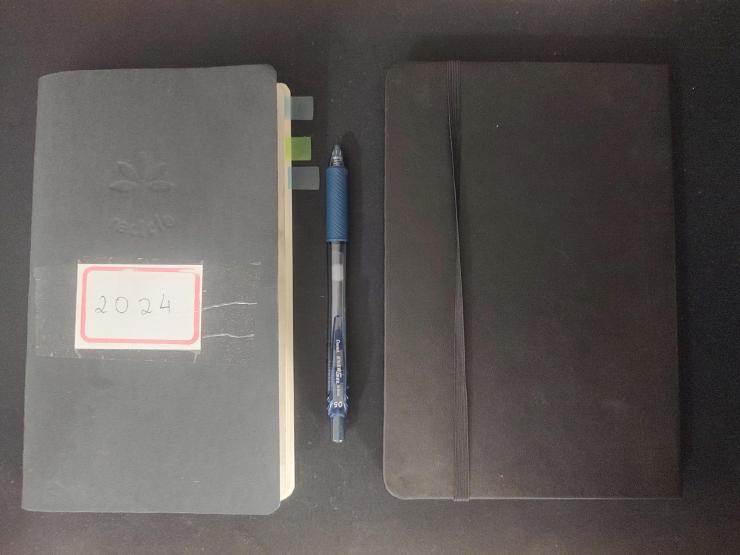A video titled The ONLY Organization System That Worked for Me - The Bullet Journal from the AsimovAcademy channel appeared in my YouTube feed. It was the first time I heard this term. I found it interesting and clicked on the video. I was surprised at how a “simple” journal could transform into something that allows you to record the past, organize the present, and plan for the future.
Although I liked how the Bullet Journal was presented in the video, I had the impression that what I saw was an adaptation—and if it was, it was a very good one. But I wanted to know what the original version looked like, without adaptations. Researching the Original Method
So, I decided to do more research on YouTube. To my surprise, all the videos explaining the Bullet Journal were adaptations. Some were so different from each other that I got lost trying to figure out which one captured the essence of the Bullet Journal.
After doing more research on Google, I discovered the origin of the method. There is a website where you can learn everything about it, including the creator and his story. The site is bulletjournal.com. It offers a lot of free content about the method, as well as paid content. Among the paid options, there’s a course and a book. I found the course too expensive—it was $200 at the time—so I decided to buy the book, which was much more affordable. The book is The Bullet Journal Method: Track the Past, Order the Present, Design the Future.
The Book: A Complete Guide (with Some Notes)
 I really enjoyed the book, although I think it could be shorter and more to the point. The beginning has a lot of promotion about how revolutionary the Bullet Journal method is, which I felt was a bit overdone.
I really enjoyed the book, although I think it could be shorter and more to the point. The beginning has a lot of promotion about how revolutionary the Bullet Journal method is, which I felt was a bit overdone.
While reading the book, my earlier impression was confirmed: all the content I had seen on YouTube was indeed adaptations. However, there is nothing wrong with that. The author himself encourages you to adapt it to your needs.
So, What Exactly is a Bullet Journal?
To summarize, a Bullet Journal is a to-do list that’s a bit more complex, where you jot down what you’ve already done, what you need to do in the short term, and what you plan to do in the long term.
In this notebook, you create what the author calls “collections.” Each collection has a specific responsibility. For example, the “Future Log” is where you plan for the upcoming months. Another example is the “September Collection,” where you lay out your goals for September.
There are various types of collections, and the author suggests some predefined collections for you to use—if you think they’ll be helpful. Otherwise, you can simply ignore them or create your own, personalized collections. For example, I have a collection called “Books Read” where I note down the books I’ve finished this year.
You can find more details on the bulletjournal.com website.
How It Helped Me
I had already tried using task lists to organize what I needed to do in the present—but only in the present. I never thought about planning what I needed to do in the future. All the tools I used were digital, whether it was Notion or Obsidian.
The Bullet Journal stands out for me because it’s analog—a physical notebook—and because of the “collections.” For example, because I have a collection for each month, when a new month begins, I force myself to reflect on what my goals are for that month. This simple reflection gives me mental clarity to decide what I really want and need to accomplish during that month. It also helps me filter and remove tasks that prevent me from achieving the goals I set for that month.
Additionally, the main benefit I found was consistency. In the Bullet Journal, you have what’s called the “Daily Log”—the name says it all. Every day, you write down the tasks you need to complete for that day. Writing down my tasks and marking them with an “X” when completed gives me a sense of relief, something I never felt with digital to-do lists.
For some of you, this might seem simple or even trivial, but for me, it made a big difference. My Bullet Journal Tools

Is It Worth Trying?
If you’ve tried other to-do list methods and haven’t had much success, I strongly recommend giving the Bullet Journal a try.
And if you decide to follow my advice and want to learn from the source, I recommend visiting the official website or purchasing the book The Bullet Journal Method: Track the Past, Order the Present, Design the Future.
